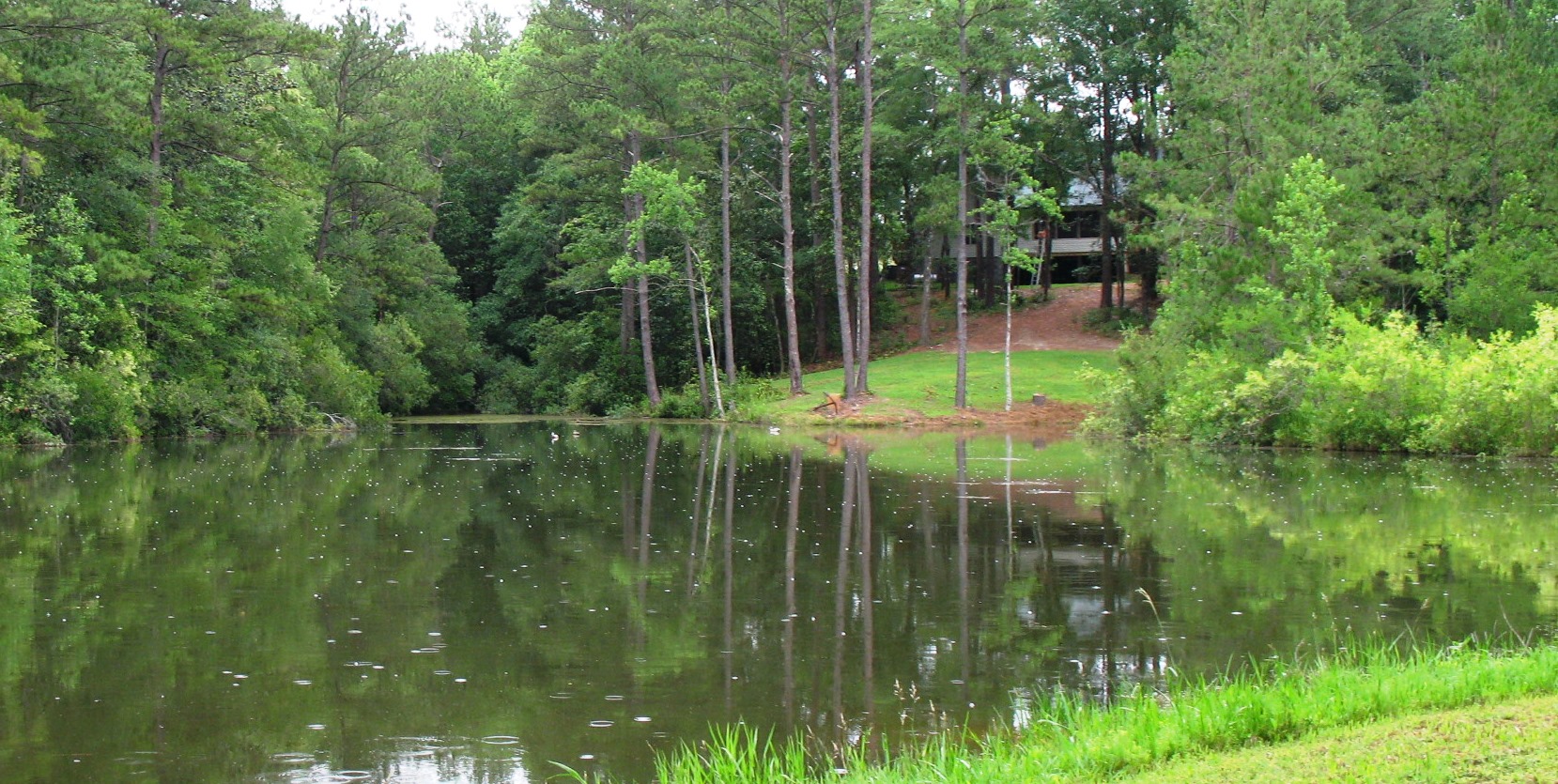Drenching rains brought unwelcome amounts of water to Northwest Florida this week. Many fish ponds received an overabundance of stormwater, pushing levels above drains, dams and levees.
If your dam or pond needs repair after the storm, now is a good opportunity to rebuild or upgrade your drains and incorporate an emergency spillway. Old galvanized pipes should be replaced with PVC. Inside pond drains should have straining features to prevent clogging and entry of trash fish. Outside drains should have two valves to allow for drainage. One at a height that prevents the entry of unwanted fish and another at a lower level that allows for quick removal of the water. Creating drainage barriers makes it easier to receive a grass carp permit, if needed in the future for aquatic weed control.
Adding a vegetated emergency spillway at the proper water level allows for excess stormwater above the capacity of the normal drainage system to exit the pond through a preplanned course. Water is removed from the pond and enters the watershed with minimal erosion. This protects the dam from failure and loss of the pond. Always consult with your local water management district and appropriate local government authorities before beginning pond construction or renovation activities.
The best time to address storm drainage is not in an emergency, but in preparation for heavy rainfall or through routine maintenance. You can pre-release pond water anticipating rainfall and associated stormwater runoff, if flood waters are not present. During preparation times, you can usually use a push-broom or rake to clear floating debris, such as tree limbs from a standpipe drain or emergency spillway.
Debris removal should be done before flood waters create a dangerous situation for the pond and persons attempting to remove debris. Attempting to remove debris alone in swift flood waters can be a difficult and dangerous task. Just one cubic ft of water weighs 62 lbs. and with added drain suction, can easily pin limbs or people to the drain, or cause injury. It’s better to wait for waters to recede and complete work in a calm environment.
Pond levees and dams can last several decades with proper design and maintenance. Most dams are constructed with a core of clay to prevent leaks and hold the water inside the pond. Constructed dams and levees should be vegetated with grasses and native herbaceous vegetation. They should have no trees. However, if you have inherited a pond or currently have one with trees greater than 1”, be aware that removing them can cause large holes. You need to consider contacting an engineer, to assess the trees impact on the dam, and the proper renovation procedure for your site.
Properly designed and sited fish ponds have an added feature; drain structures can be designed to minimize the entry of unwanted fish such as “bullhead” catfish and other opportunistic species that could potentially diminish pond production. If your fish pond recently flooded, then scout for the presence of fish other than bass or blue gill (bream). An invasion of unwanted fish species into a pond with a healthy bass population is likely to be short lived, but it is worth watching out for and potentially addressing. See the video below for a technique used to remove unwanted fish populations from ponds.
Please contact your local county extension office or the author for further assistance.
- Preventing and Responding to Flooded Fish Ponds - May 2, 2014

